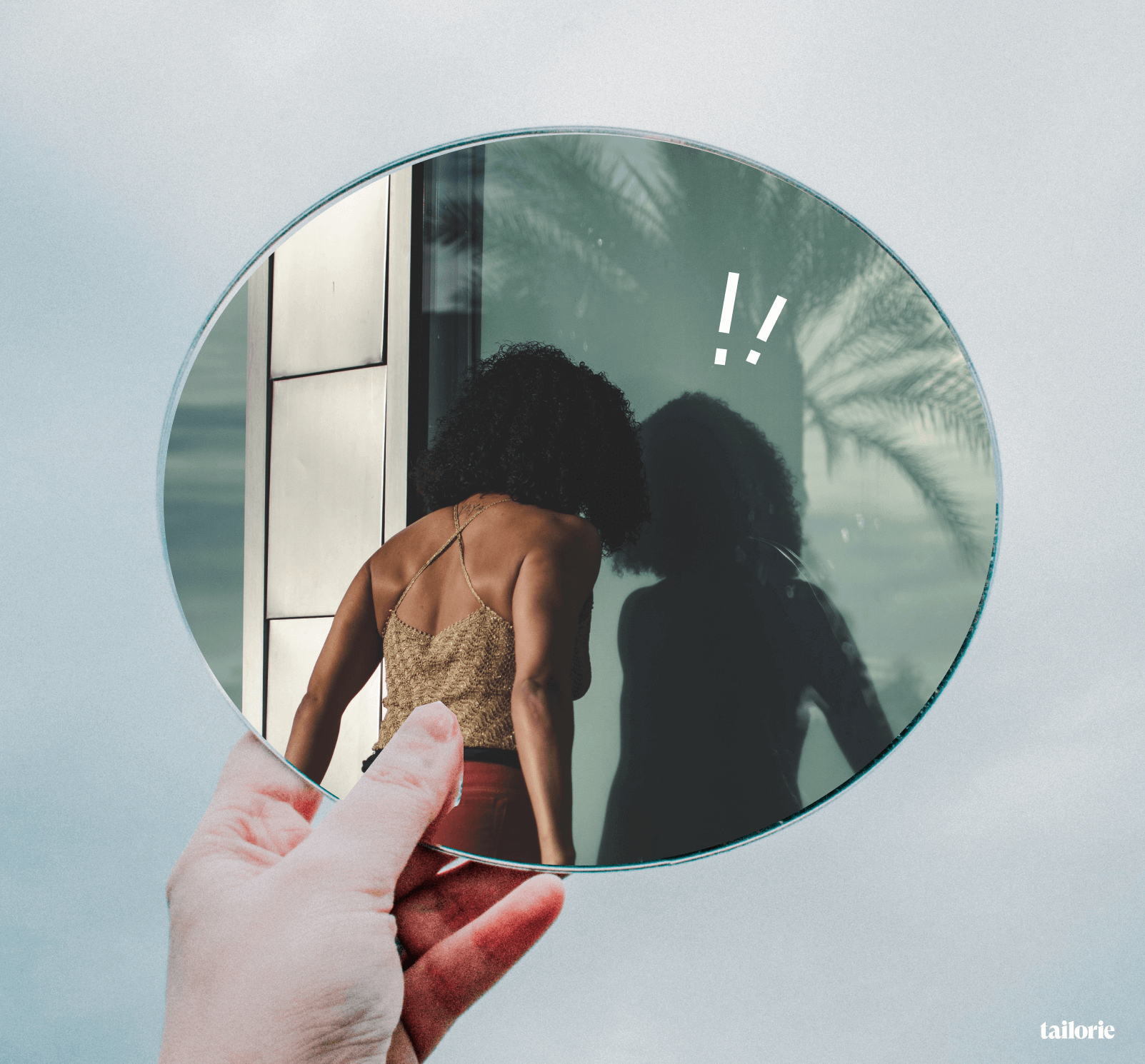What do a skittish cat, a brand marketer, and a discerning customer all have in common? Fear. Fear of the unknown, fear of change, fear of taking a leap into something new and unfamiliar. Yet, the paradox is that they all yearn for something better than the status quo. It’s a universal truth that change is the only constant, yet it’s a truth that terrifies and paralyzes us, creating a dilemma in the world of marketing that needs resolution. As we peel back the layers, let’s explore the roots of this skepticism and the insights brands can glean from this mirroring effect.
Fear is a primitive emotion, as old as our species itself. It hails from a time when our ancestors braved an untamed world, filled with unseen dangers. This fear, now deeply rooted within us, acts as a compass guiding us away from perceived threats. However, in the context of today’s dynamic digital market, this inbuilt fear has the potential to stunt our progress, acting as a barrier between us and the many rewards of innovation.
The Psychology of Consumer Risk Aversion
At the core of consumer skepticism is an innate, psychological trait that we all share – risk aversion. A basic principle of human nature, risk aversion is the tendency to prefer certainty over uncertainty, the familiar over the unknown. This principle is deeply ingrained in our decision-making processes, often influencing us unconsciously.

When it comes to purchasing decisions, risk aversion often takes center stage. Consumers weigh their options, gauging the potential gains against the potential losses. They ponder over questions like, “Will this product be worth my money?” or “Will it live up to the claims made by the brand?” It’s not simply about the financial loss but also the potential disappointment, the fear of making the wrong choice. This fear forms a major barrier to trying new products, leading to skepticism and reluctance to step outside of what’s tried-and-true.
A study published in the Journal of Marketing Research (2012) underscores this behavior. It showed that consumers often stick to their habitual purchases, even when presented with superior options, due to an inherent bias towards what’s familiar. This is often referred to as the “status quo bias.”
This understanding of consumer risk aversion provides valuable insights for brands. By acknowledging and addressing these fears, brands can design marketing strategies that alleviate potential anxieties and build consumer confidence. This is particularly pertinent when introducing new products or concepts into the market.
The Skeptic’s Paradox
The marketing landscape is a mosaic of brands, each grappling with their unique challenges, yet united by common concerns. From fleeting consumer attention spans to the burgeoning cost of customer acquisition, from the opacity of ad spending results to the constant need for differentiation, brands wrestle with an array of conundrums. The need for change is palpable, yet the leap towards new solutions seems daunting.

Why is this so? Unsurprisingly, fear is a common denominator. Fear of wasting resources, fear of straying from the beaten path, and most importantly, fear of not meeting the lofty expectations set by industry benchmarks. Promises of threefold returns on ad spend float around, but the harsh reality of limited budgets and escalating costs hit hard. The result? A standoff between the status quo and the unknown, with brands feeling stranded.
Reflecting the marketers’ fear is the consumer’s mirror image of dread. Driven by the same fear of the unknown, consumers cling to their time-tested brands and products like a lifeline in a turbulent sea of options. Before they are willing to change their habits, they need guarantees— of value, quality, and relevance. Simultaneously, brands expect their consumers to embrace new products with open arms while they, in turn, show the same hesitation when presented with innovative marketing strategies. Recognizing this mirrored fear paradox is a critical step towards resolving the Fear Paradox.
Brands in the Mirror: Learning from Consumer Skepticism
As brands grapple with their fears, they may find it enlightening to glance at the mirror image presented by their consumers. Customers, much like brands, are often caught between the allure of the new and the comfort of the known. The vast array of options, rather than liberating, may prove overwhelming, leading to what psychologists call ‘choice paralysis.’ They too yearn for guarantees before stepping into the unknown, echoing the brands’ quest for assured outcomes.

The mirroring effect in play offers brands a unique perspective. By understanding the roots of consumer skepticism, brands can address their own hesitations in adopting new marketing strategies. Trust and transparency concerns resonate on both sides. Brands yearn for trustworthy solutions that deliver clear, measurable outcomes. Just as consumers desire brands that are genuine and transparent, brands too seek solutions that offer the same qualities.
Similarly, the information overload that consumers experience mirrors the marketing landscape. Brands are often overwhelmed with a glut of strategies, tools, and tactics. The choice paralysis that consumers face can indeed reflect the hesitations brands experience when confronted with the task of choosing a new marketing strategy or platform.
And when it comes to cognitive dissonance, brands too grapple with similar challenges. They may hesitate to adopt new strategies that don’t align with their existing beliefs about marketing success or because they fear how these changes might affect their established brand image.
The Expectation Paradox
While it’s often expected that consumers will take the leap of faith to try new products or brands without any guarantee of satisfaction, such expectations are rarely reciprocated when brands are faced with the same scenario. Brands demand reassurances, guarantees of increased return on ad spend, or better customer acquisition rates. Yet, they often neglect to offer similar guarantees to their consumers in terms of product satisfaction or value.

This double standard reflects an inherent imbalance in the market dynamics. In a rapidly evolving market landscape, both consumers and brands need to be willing to step outside their comfort zones and embrace change, albeit with appropriate reassurances. But these expectations must go both ways to maintain equilibrium and foster an environment of trust and growth.
Brands have the responsibility to set the tone in this equation. They need to assure consumers about the value, quality, and relevance of their products. Offering ‘money-back’ guarantees, product trials, transparent information about the product’s performance, and quality customer service are a few strategies that can help assuage consumer fears and skepticism.
At Tailorie, we strive to mitigate this inherent risk aversion. Our approach is to lower the perceived risks associated with trying new products through strategies such as “gifted products” and “exclusive pricing.”
In providing a safe and reassuring space for consumers to explore, we not only encourage consumers to try new things but also provide brands with a more confident entry point to the market. The result is a win-win situation for brands and consumers, cultivating relationships built on trust and mutual benefit.
Tailorie’s approach is rooted in a profound understanding of the shared psychology of fear and risk-taking in decision-making processes. We recognize the shared hesitation between brands and consumers when it comes to embracing new offerings or strategies.
To bridge this gap, Tailorie offers a unique model that incorporates value-led marketing through “gifted products” or “exclusive pricing.” These strategies essentially provide the much-needed safety net or assurance both parties inherently seek when trying something new.
Gifted Products: At Tailorie, we’ve reimagined product sampling by turning it into a gift. The ‘risk-free trial’ becomes not just a marketing tactic but a thoughtful gesture that introduces consumers to new products without any financial risk. By turning the first touchpoint into a gift, we eliminate the consumer’s initial hesitation and create a positive first impression, setting the stage for a fruitful relationship between the brand and the consumer.
Exclusive Pricing: Recognizing that cost is a significant factor in decision-making, Tailorie utilizes deep discounting to lower the barrier to trying new products. By significantly reducing the financial risk associated with trying something new, we encourage consumers to step out of their comfort zones and explore.
Through Tailorie’s approach, brands can offer consumers a low-risk way to try their products, which can drive higher adoption rates and build stronger brand-consumer relationships. Moreover, this strategy offers the reassurance that brands themselves seek when adopting new strategies— they are not investing blindly, but rather in a method that’s designed to resonate with consumer psychology.

De-risking for Brands: Data-Driven Decisions and Intentional Introductions
At Tailorie, we are all about reducing risks for brands as well. Our approach is rooted in leveraging first-party data and intentional introductions that significantly enhance consumer engagement.
First-party data: In today’s digital era, data is king. It provides an unparalleled depth of insight into consumer behavior, preferences, and expectations. Tailorie understands the power of this data. We harness first-party data, i.e., data directly collected from our consumers, to provide brands with deep insights into consumer demographics, product preferences, shopping habits, and more. These insights inform brands’ strategic decisions, helping them fine-tune their offerings, target their communications, and ensure that they resonate with their audience. It’s a scientific approach to marketing, eliminating guesswork and speculation.
Additionally, first-party data provides an invaluable feedback loop for brands. They can gauge consumer response to new products or strategies, allowing them to make data-driven tweaks and improvements. It mitigates the risk associated with launching a new product or adopting a new strategy. Brands are no longer shooting in the dark but making informed decisions based on robust data.
Intentional introductions: At Tailorie, we believe that the first interaction between a brand and a consumer is crucial. It sets the tone for the entire relationship. Therefore, we ensure that these introductions are intentional and thoughtfully curated. Our platform introduces consumers to new brands and products in a way that aligns with their tastes, preferences, and values. These personalized introductions create a meaningful first impression, laying the groundwork for a positive, long-term relationship.
Moreover, these intentional introductions are designed to drive consumer engagement. By presenting consumers with brands and products that align with their preferences, we encourage them to interact, explore, and ultimately, make a purchase. It significantly increases consumer engagement, thereby maximizing the potential return on investment for brands.
Tailorie offers a unique approach to mitigating the Fear Paradox. We provide a safe, reassuring space for consumers to explore new products, backed by a data-driven strategy that reduces risks for brands. By aligning consumer psychology with brand strategy, we drive meaningful engagement and build long-term, trusting relationships between brands and consumers. It’s a win-win approach, revolutionizing the way we understand and approach marketing.
Conclusion: Reimagining the Fear Paradox
Understanding the Fear Paradox and the Expectation Paradox gives brands the tools to re-imagine their strategies and approach to marketing. The key is to step back, introspect, and acknowledge the deep-rooted fears that might be influencing their decisions. By mirroring consumer behaviors and expectations, brands can gain critical insights into their own fears and how to overcome them.

As we strive to innovate and push boundaries, we must remember the core principles that guide us – trust, transparency, and the courage to embrace change. In acknowledging our fears, we lay the foundation to overcome them, providing a solid platform for innovation and growth.
Embracing change doesn’t mean a blind leap into the unknown, but a calculated move backed by robust data, deep insights, and unflinching customer empathy. As we navigate this fascinating world of marketing, let’s continue to learn, adapt, and grow, guided by our reflections and revelations. The key is not to avoid fear, but to understand and harness it, creating a thriving market space that welcomes innovation, while honoring the timeless values of trust and reliability.
In this dance of fear and innovation, the brands that can effectively mirror their consumers, understand their fears, and provide reassurances will be the ones that stand out, and ultimately, succeed. And as we realize, the cat isn’t that skittish after all; it’s just cautious, waiting for the right cues to leap into the unknown, as should we.





